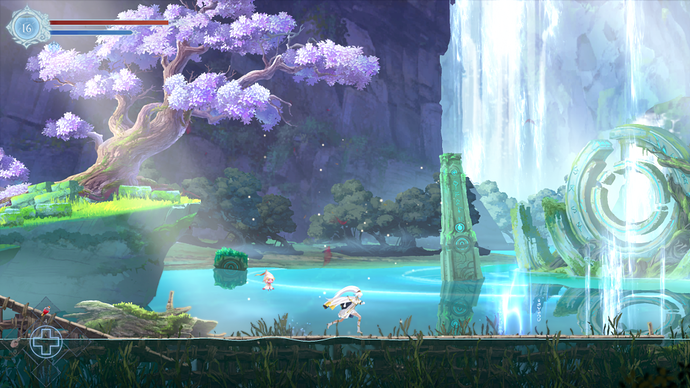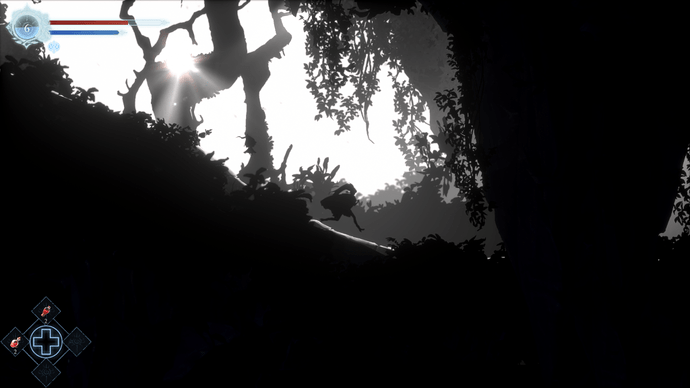Originally published at: Review | Afterimage - XboxEra
I think it’s been a while since I’ve touched a Metroidvania. Those adventure games of yore that offer the player a sprawling map with secrets and other goodies, but often require the player to traverse certain parts of the world first before inevitably backtracking to whatever last caught their attention but couldn’t quite get to. Afterimage, of course, is just like that—and it came along at the perfect time, too. Developed by Aurogon Shanghai and published by Modus Games, Afterimage follows the story of Renee and her floating companion as they awaken to find their world in ruin and a spot of amnesia too.
Aurogon Shangai’s first venture into the console sphere is a pleasant one, boasting a strong combat system and beautiful visuals. But there are a few thorns poking our fair Renee’s side which can make her journey a bit duller than it has to be. Here, lemme talk a bit more about that After this Image.
Lush and Rich
As I briefly explained earlier, Afterimage is a Metroidvania. Players start off having limited access to the overworld in which they will need to explore to gain new abilities that can be used to traverse to parts of the map that they couldn’t access before. It’s a form of intriguing the player through self-discovery, an almost sandbox-like idea of “you can go where you’d like, as long as you can”. I mean there’s a reason this genre is fairly popular I think, because as long as the developer offers a strong combat system with interesting enemy mechanics alongside level design that’s intuitive and picks at the player’s curiosity, you’ll have a game that can be replayed for years to come. Speaking of the game on a mechanical level, anyway.
Afterimage sports solid functionality and visuals against a beautiful and expansive world. Renee’s arsenal consists of magic, swords, greatswords, whips, and dual blades. Weapons she can find as she explores the world or by meeting merchants on her journey. This gives you a lot of flexibility on how to better approach enemy encounters, and you unlock more moves for your weapons as you invest in your talent tree (a fairly large one at that). I always preferred to keep my distance from baddies, so I tended to go with the greatsword and whip which let me clear out troublesome foes even behind walls. Renee has limited innate heals (which will increase as you progress the game) and dying sends you back to the last save point—a fruit tree—where thankfully the player doesn’t lose much besides having to trek back to where they last died to pick up their lost experience points.
Which leads me to level design. Level design in Afterimage starts off a bit uninteresting. I don’t think immediately giving the player so many directions to go in so early on works best, especially since Renee is slow to gather some rather basic abilities such as dashing forward or double jumping. It’s when you leave the initial two to three starting areas where the game quickly picks up and plays a lot better in my eyes. Besides the large variety of enemies and bosses you’ll run into, there are a lot of secret areas and a decent number of platforming challenges to clamber through to find better loot. Speaking of which, if you ever find yourself having trouble with a boss, just run around and break things til you find higher damaging weapons and enough experience points to level up.
Some of the best moments of Afterimage are when you’re zipping about some of the harder platforming stages and the side quests you can take on provided by the citizens of the overworld. And at its best, I love when the game is swapping between so many colour palettes. From dark and abandoned towns to green shrubberies in the remains of a castle, the game’s art style distinctly reminds me of The Legend of Hei and The Legend of Luo Xiaohei. While probably not intentional, I like Xiaohei and Afterimage reminding me of that makes me like its visual style all the more.
Image Retention
Afterimage does have some retention issues. Not on the screen, my pun-loving reader, but with visual clutter, enemy mechanics, and how Renee controls as a character. I’ve said I love the game’s visuals, but something I don’t like about the game is how often objects in the foreground exist to block your vision. Typically, in 2D games, anything foregrounded would phase through to reveal your character and enemies as you pass through them.
Not in Afterimage and being stuck behind something you can’t see through happens enough to be a reoccurring annoyance. Adding to that, the art style itself is pretty busy and I often found myself being attacked by the smaller enemies more often than not because I couldn’t see them while navigating the terrain. And while we’re on the subject, I feel like this game has a depth issue of sorts. The playable area, what’s in the foreground, and especially the background sometimes meshes together and it all looks rather flat. This wasn’t really a factor in playability but seeing how closely together clouds squish or the ruins below looking ever so ‘flat’ did break my immersion from time to time.
Now regarding enemies and how they react to their world and against you. You’ll sometimes be up against swathes of baddies but clearing them is rarely a problem. Part of that reason is because enemies don’t have any reaction to being hit, or rather a lack of retaliation. In most Metroidvania titles, enemies being hit would typically trigger a retaliatory attack that comes out suddenly. This was to prevent the player from cheesing foes as well as to keep them on their guard constantly. Enemies don’t do that in Afterimage and when combat is your primary engagement mechanic, it leaves a lot to be desired. I ended up dashing my way through the game’s stages to get to the jumping puzzles and boss fights quicker once I was leveled up enough to destroy most baddies.
Platforming in this game isn’t difficult, especially once you get most of your abilities. The default movement is tied to the analog stick, but I highly recommend switching to the direction pad. It helps Renee feel much lighter, especially once you need her to perform down dashes on some floating platforms which I feel would trigger inconsistently. And her jump almost feels limited by forces unknown. Either that or some of these platforms feel like they were placed just at the top of her jump making for some rather tight platforming. This isn’t a bad thing actually, but for some I recognise that this could make Afterimage a bit of a difficult run.
Lythraceae
I had a good time with Afterimage. Its levels got more and more interesting as you progressed, the characters you’d run into were well-acted and I liked the interactions Renee had with them. There’s a lot of game to go through with Afterimage, multiple endings in fact. And though I spent most of my time cheesing encounters because I could, and I take issues with the game’s presentation, there’s a strong gameplay loop that I think many players, especially those new to Metroidvania-style games, will enjoy in Aurogon Shanghai’s first venture into 2D action games.


